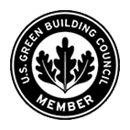Our journey begins with technology in farming, exploring how all sorts of farmers – with a special nod to melon growers – are harnessing automation, robotics, and AI. They're not just saving time and money; they're also making impressive strides in water conservation. The momentum of scientific solutions continues with two captivating stories about algae. Prepare to be intrigued: in one, it's devoured by "super-clams," and in the other, it's ingeniously converted into sustainable fuel.
Next up: ever heard of a baby coral? These lab-grown infants are proving vital in the effort to sustain and rebuild Florida's stunning natural resources. And for a grand finale, picture this: a team of Master Gardeners arriving to revitalize your own backyard. Believe it or not, it's closer to reality than you might think!













